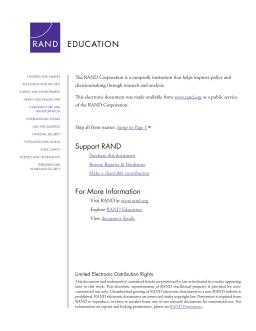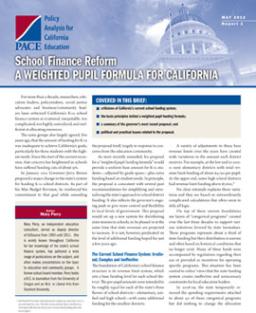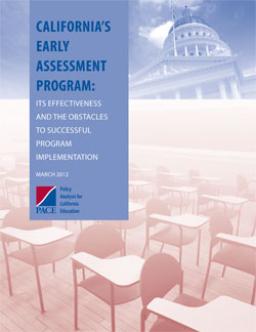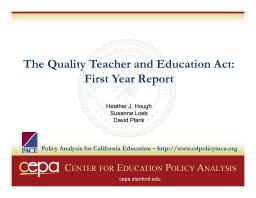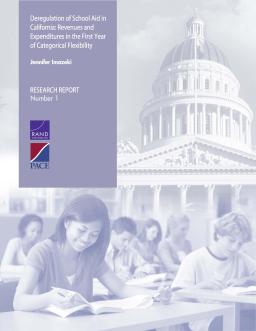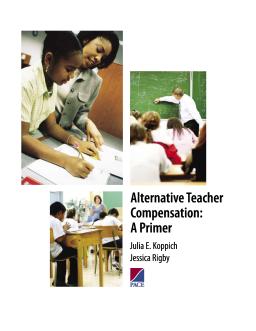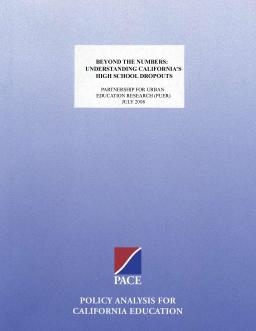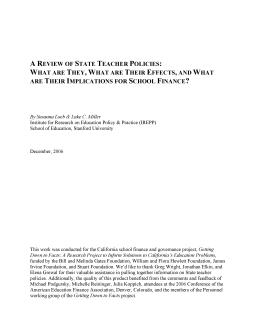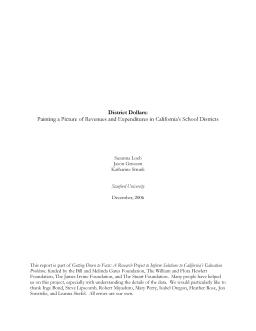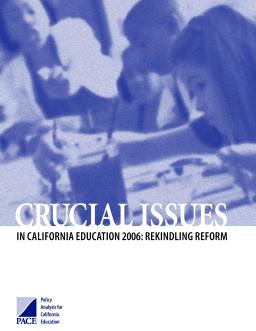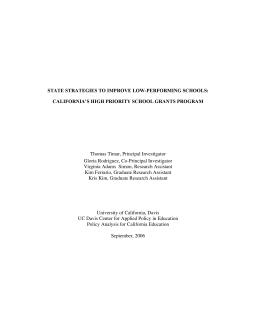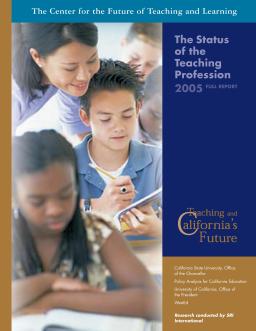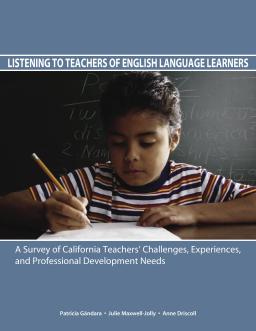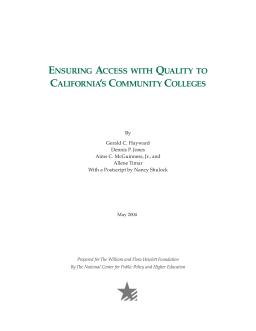Summary
Summary
Summary
Summary
This report commemorates the fifth anniversary of the Getting Down to Facts project, which sought to provide a thorough and reliable analysis of the critical challenges facing California’s education system as the necessary basis for an informed discussion of policy changes aimed at improving the performance of California schools and students. The report focuses on the four key issues that received emphasis in the Getting Down to Facts studies: governance, finance, personnel, and data systems.
Summary
Summary
The Early Assessment Program (EAP) is a national model for increasing the number of students who are prepared for college and careers upon graduating high school. It has been recognized by two national consortia as the model for designing new high school assessments aligned with Common Core State Standards. The report highlights the EAP's key features and potential to strengthen coherence and alignment in California's educational system, reviews research on its impact on student success, and suggests modifications to increase its value to students and educators.
Summary
Summary
Summary
Summary
Summary
Summary
Summary
Summary
Summary
Summary
This report examines the fiscal and labor resources of California principals and how they acquire and utilize them to improve student performance. The authors seek to understand the background characteristics and educational goals of California principals, as well as the types of monetary, human, and informational resources they acquire and how they allocate these resources within their schools. The report also explores the support and constraints that principals experience from various actors as they attempt to acquire and deploy resources to raise student performance.
Summary
Summary
Summary
Summary
Summary
The report examines the effectiveness of a large-scale performance-based incentive program in California schools. Results show that the program had a small but positive impact on student test scores in math and English, with larger effects in schools with high levels of poverty. However, the authors caution that incentive programs may have unintended consequences and should be implemented with care.

